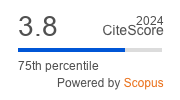Article | Open Access
Tracing Walkability Through Disruption Assemblages in Aleppo’s (Post‐)Conflict Historic Core
| Views: | 1520 | | | Downloads: | 529 |
Abstract: War disrupts the symbiotic interplay between bodies and built environments, unravelling familiar routines and destabilizing urban life. Walking, thus, becomes a precarious tiptoeing through danger and continual re‐routing, a spatial practice of survival and resistance, asserting presence and agency amid violence. Consequently, urbicidal practices and persistent insecurities reconfigure walkability, undermining patterns of normality and a collective sense of safety. Yet, post‐conflict reconstruction, particularly in historic cores, rarely considers former or newly formed footpaths, further misaligning future project agendas with context‐specific recovery needs. This article develops the “disruption assemblages” approach, a conceptual framework that captures the dynamic interplay of material, temporal, and human elements in conflict‐ridden contexts, to examine war’s impact on walkability. Using Aleppo’s historic core as a case study, it highlights the inseparable connection between the urban fabric’s sensory‐spatial characteristics and its social‐temporal layering of familiarity and generational presence. Qualitative methods—including historical analysis, sensory ethnography, and walking as a research tool—reveal how Aleppo’s historic core has metamorphosed into a landscape of complex survival practices, danger‐evasion tactics, and everyday resistance. These findings illuminate the contested spatio‐temporality and lived experiences of reclaiming rights to and within urban space, demonstrating how walkability is deterritorialized and reterritorialized in war‐torn landscapes and during sporadic (post‐)conflict reconstruction. Ultimately, this article argues for re‐centring walkability in (post‐)conflict healing and proposes the “attract a foot” approach, emphasizing the imperative of re‐enabling walking as a sociable and human‐centred recovery strategy.
Keywords: Aleppo; assemblages; disruption; post‐conflict; reconstruction; urbicide; walkability
Published:
© Diana Salahieh, Layla Zibar. This is an open access article distributed under the terms of the Creative Commons Attribution 4.0 license (http://creativecommons.org/licenses/by/4.0), which permits any use, distribution, and reproduction of the work without further permission provided the original author(s) and source are credited.


